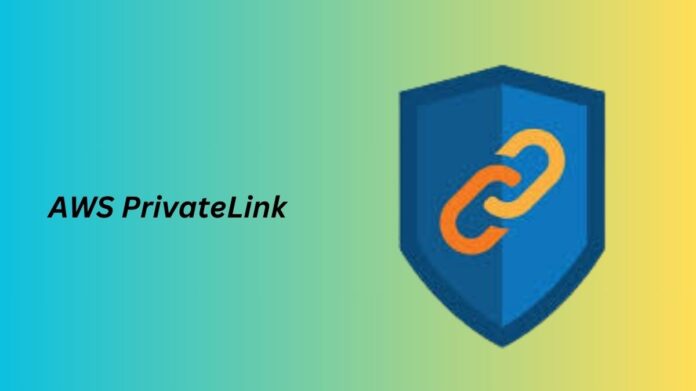Connect AWS services and VPCs without disclosing any data to the public internet.
What is AWS PrivateLink?
Using the highly available and scalable AWS PrivateLink technology, you may link your VPC to resources and services in a private manner just like if they were part of your VPC. Allowing communication with the service or resource from your private subnets does not need the usage of an internet gateway, NAT device, public IP address, AWS Direct Connect connection, or AWS Site-to-Site VPN connection. As a result, you have complete control over which websites, services, API endpoints, and resources are accessible from your VPC.
Benefits
Guard your traffic
Using private IP addresses to exchange data with services and resources outside of your VPC can help you secure your traffic.
Simplify the management rules
Reduce data output and NAT expenses while connecting with streamlined network and firewall control rules.
Boost cloud migrations
Combine PrivateLink with a VPN or AWS Direct Connect to speed up cloud migrations.
Stay compliant with regulations
Provide SaaS services while adhering to numerous requirements, including PCI, EU-US Privacy Shield, and HIPAA.
What makes AWS PrivateLink so special?
Find out how to simplify your network design by using PrivateLink to connect services and resources across several AWS accounts and VPCs.
How does it work?
AWS With PrivateLink, you may link your on-premises networks, virtual private clouds (VPCs), and supported services and resources privately without exposing your traffic to the public internet. Through Interface VPC endpoints, which are powered by PrivateLink, you can access AWS and AWS Partner services as well as compatible products in the AWS Marketplace. Gateway Load Balancer Appliances are connected to VPC endpoints. PrivateLink-powered Resource VPC endpoints allow you to access VPC resources including databases hosted by Amazon Relational Database Service (Amazon RDS), as well as domain names and IP addresses in other VPCs and accounts. You are connected to Amazon VPC Lattice service networks via service network VPC endpoints.
Use cases
Get AWS services safely
By connecting to AWS services both on-site and from your VPC, you may securely, privately, and scalablely move important data.
Keep up with regulatory requirements
Stop sensitive information, such client records, from going online in order to stay in compliance with laws like PCI, EU-US Privacy Shield, and HIPAA.
Migrate to hybrid cloud
Connect data and apps on-premises to AWS-hosted SaaS apps safely to create a hybrid cloud architecture.
Provide SaaS services through APN
Although they are safely accessible from the cloud and on-site, AWS Partners provide services that are hosted directly on a private network.
Obtain VPC resources safely
Access VPC resources on-premises and from your VPCs in a private, secure, and scalable manner.
Apply AWS PrivateLink to link your VPC to services
Virtual private clouds (VPC) and resources, services hosted by other AWS accounts, supported AWS Marketplace services, and AWS services are all privately connected by AWS PrivateLink. You can connect to the service or resource without using an internet gateway, NAT device, AWS Direct Connect, or an AWS Site-to-Site VPN connection.
In order to access the service or resource from any subnet, you must first construct a VPC endpoint in that subnet. As a result, elastic network interfaces are created in the designated subnets, acting as entry points for traffic going to the resource or service.
Moreover, you may use AWS PrivateLink to build your own VPC endpoint service and grant other AWS users access to it. PrivateLink makes it possible to create private API endpoints, which let businesses safely share their own services with other AWS users. Businesses are able to take control of how their services are used and accessible, create collaborative ecosystems, and monetise their internal capabilities.
Establishing safe, private connectivity without the need of conventional networking components like internet gateways, NAT devices, or VPN connections is one of the main advantages of utilising AWS PrivateLink. By keeping the data traffic contained within the AWS network, this minimises the attack surface, streamlines the network architecture, and enhances overall security.
Typical AWS PrivateLink use cases are depicted in the diagram below. The VPC contains five VPC endpoints that provide resources to many EC2 instances in a private subnet. The VPC endpoints are divided into three interfaces, one resource, and one service-network.
AWS PrivateLink pricing
Setting up private connectivity to a service that is either owned by AWS or by a partner or client of AWS is possible by creating AWS PrivateLink endpoints. Whether or not your VPC endpoint is currently associated with the service, you will be charged for each hour that it is provisioned in each Availability Zone. Upon deletion, your VPC endpoint’s hourly billing will cease.
Additionally, if the endpoint service owner rejects your VPC endpoint’s attachment to their service and eventually deletes that service, hourly payment will cease. You should delete these VPC endpoints since they cannot be utilised again. Payment is made for each half VPC endpoint-hour used. Regardless of where the traffic originates or ends, data processing fees are assessed for every gigabyte processed through the VPC endpoint. For more details visit AWS Privatelink pricing page.


